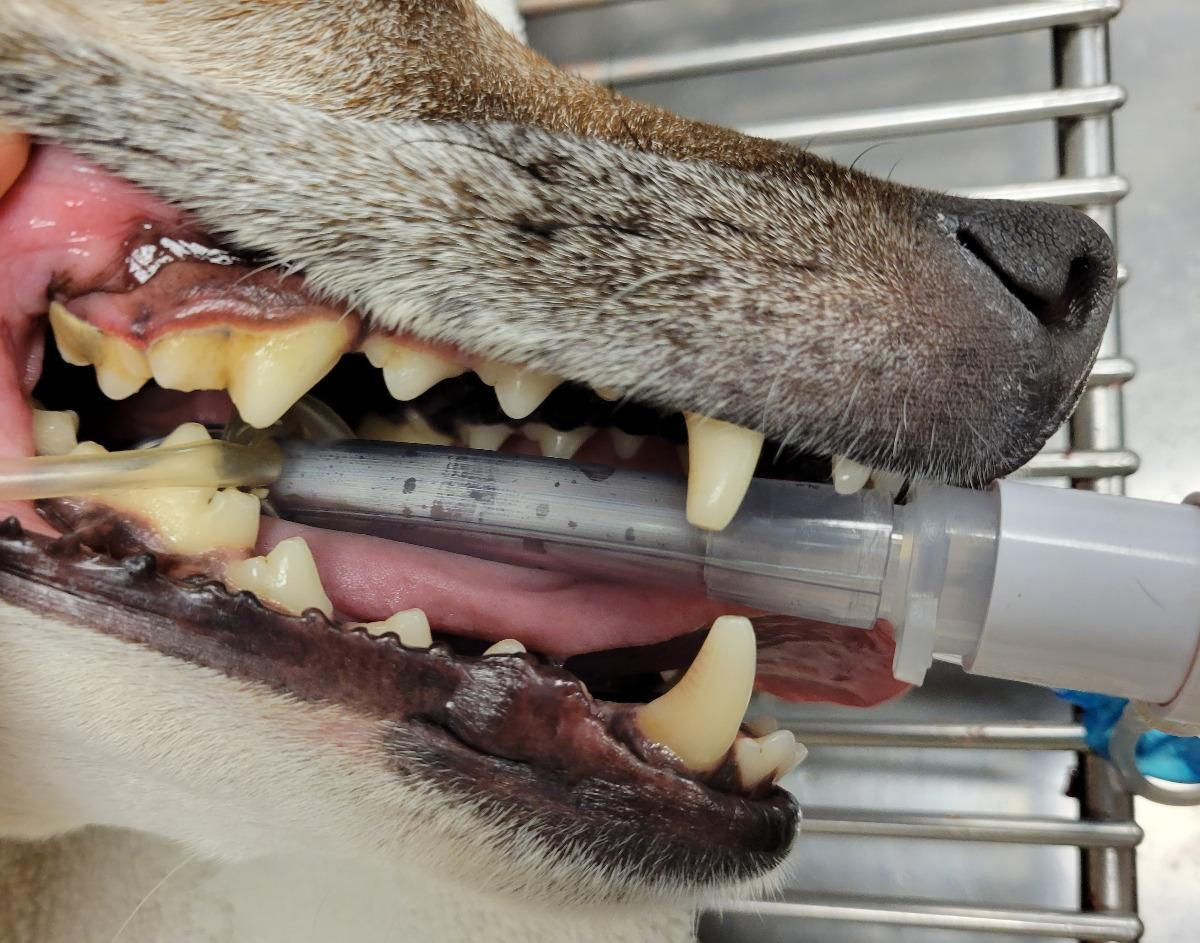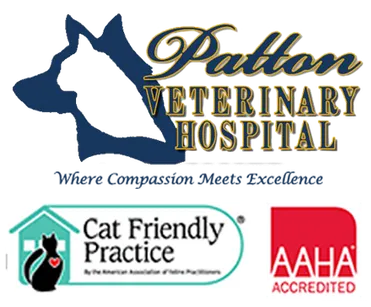February is Dental Health Month!

- posted: Feb. 09, 2024
February is Dental Health Month!
February is National Dental Health month for pets. Let’s face it, most of us are not brushing our pets’ teeth—if you are, you’re ahead of the game! Nearly all pets need to have their teeth cleaned professionally by a veterinarian at least once in their lives if not every one to two years. Let’s learn more about why pets need professional cleanings and just what happens during a dental cleaning.
Let’s start with why your pet should have his teeth cleaned. Periodontal disease is common and present in over 70% of all dogs and cats over the age of three. Bad breath, drooling, reluctance to eat, and pawing at the mouth are all signs of serious dental disease. But these signs are not always present and may not appear until disease is severe. Dogs and cats are good at hiding pain, and serious problems may not be obvious. Loose teeth, broken teeth and inflamed gums are painful. Just because your pet is still eating and acting normal does not mean he is not in pain. Dental disease should not be ignored. It can lead to tooth loss as well as infection that may spread to the heart, kidneys and liver. Dental disease is not always readily visible. The part of the tooth we can see called the crown may appear perfectly normal, but there may be disease present below the gumline. This is why a thorough exam of a pet’s mouth-including x-rays-under sedation is so important.
Anesthesia is often the scariest part of having your pet’s teeth cleaned, but it is necessary and we do all we can to make it as safe as possible. We need to be able to look at every tooth and we need to be able to probe the gums for pockets and to check all surfaces of the teeth; therefore, your pet needs to be asleep. Can you imagine trying to see all of this in an excited squirmy pet? Anesthesia is a must. The risks of complications from dental disease far outweigh any risks from anesthesia for most pets. Non-anesthetic cleanings are NOT recommended. Even if you have the world’s most well-behaved pet, it is just not possible to do a good deep cleaning, scale under the gumline and check all surfaces of the teeth for problems if he or she is awake.
Now, the actual cleaning procedure. Your pet is examined and blood tests are reviewed to make sure he or she is healthy enough for anesthesia. Your pet is given an injection of a sedative to relax her, and an IV catheter is placed. Additional sedation is given, and a tube is placed in the windpipe to deliver gas anesthesia and oxygen to keep your pet asleep during the dental cleaning and to protect the airway from water, blood and bacteria from entering the windpipe and lungs during the cleaning process.
Once asleep, the teeth are probed and any problems noted. X-rays of all the teeth are taken so we can see the roots and surrounding bone. Any loose, infected or fractured teeth with evidence of bone loss or damage to the pulp are surgically extracted and the gums are sutured over the hole or sulcus with stitches that will fall out on their own in a few weeks once the area has healed. A veterinary technician then uses and ultrasonic scaling tool to remove plaque and tartar and the teeth are polished with paste very much like what our own dentists use.
Early dental cleanings and home care save not only your pet’s teeth but your money as well! It is far less expensive and takes much less time to clean teeth with mild tartar than to deal with a mouth that has severe periodontal disease. After your pet’s teeth have been cleaned, continuing dental care at home is very important in keeping his or her mouth healthy. Brushing, rinses, and chews can all be beneficial to maintaining a healthy mouth. Let’s work together to keep bright shiny smiles for all our cats and dogs!
This blog brought to you by The Patton Veterinary Hospital serving Red Lion, York and the surrounding communities.
https://www.avma.org/resources-tools/pet-owners/petcare/pet-dental-care
Location
Patton Veterinary Hospital
425 E Broadway
Red Lion, PA 17356
